
Ibrahim Ahmed Mahmoud al Qosi is a Sudanese militant and paymaster for al-Qaeda. Qosi was held from January 2002 in extrajudicial detention in the United States Guantanamo Bay detainment camps, in Cuba. His Guantanamo Internment Serial Number is 54.

Hisham Sliti, is a citizen of Tunisia who was held in extrajudicial detention in the United States Guantanamo Bay detention camps, in Cuba. His Guantanamo Internment Serial Number is 174. The list of the names of all the Guantanamo detainees states that his date of birth was February 12, 1966, in Hamam Lif, Tunisia. He was transferred to Guantanamo on May 1, 2002, and held there for twelve and a half years. On November 20, 2014, Sliti and Hussein Salem Mohammed were granted asylum in Slovakia.
Sadik Ahmad Turkistani is an ethnic Uyghur born and raised in Taif, Saudi Arabia and an opponent of the Taliban. Held by the Taliban in Kandahar prison in Afghanistan, he was briefly freed when they were overthrown in late 2001.
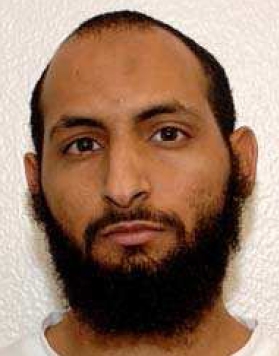
Mahmoud Abd Al Aziz Abd Al Mujahid is a Yemeni citizen who was held in extrajudicial detention in the United States Guantanamo Bay detainment camp, in Cuba, for over fourteen and a half years, from January 11, 2002, to August 15, 2016. His Guantanamo Internment Serial Number is 31. Joint Task Force Guantanamo analysts report that he was born in August 1980, in Taiz, Yemen.
Saeed Ahmed Mohammed Abdullah Sarem Jarabh is a citizen of Yemen who was held in extrajudicial detention for over fourteen years in the United States Guantanamo Bay Naval Base, in Cuba. Joint Task Force Guantanamo analysts estimate he was born in 1976 in Jeddah, Saudi Arabia.

Khaled Ahmed Qasim is a Yemeni citizen who was held in extrajudicial detention in the United States Guantanamo Bay detention camp in Cuba.
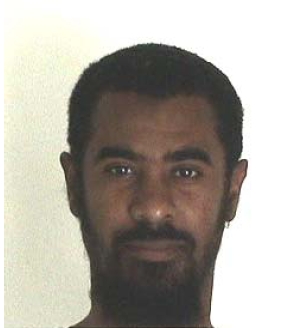
Sulaiman Awath Sulaiman Bin Ageel Al Nahdi is a citizen of Yemen, who held in extrajudicial detention in the United States Guantanamo Bay detainment camps, in Cuba, from May 5, 2002, until November 16, 2015. Al Nahdi's Guantanamo Internment Serial Number is 511. The Department of Defense reports that al Nahdi was born on December 1, 1974, in Mukalla, Yemen.

Muhammad Ahmad Abdallah al-Ansi is a citizen of Yemen, held in extrajudicial detention in the United States Guantanamo Bay detention camps, in Cuba. His Guantanamo Internee Security Number is 029. American intelligence analysts estimate he was born in 1975, in Sanaa, Yemen. He was cleared for release on December 9, 2016, a recommendation made public on December 22. He was transferred to Oman with nine other men on January 16, 2017.
Samir Naji al Hasan Moqbel is a citizen of Yemen who was held in extrajudicial detention in the United States's Guantanamo Bay detention camps, in Cuba. His Guantanamo Internee Security Number was 043. The Department of Defense reports Moqbel was born on December 1, 1977, in Taiz, Yemen.
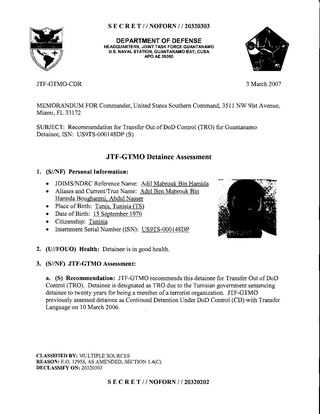
Adel Ben Mabrouk is a citizen of Tunisia who was held in extrajudicial detention at the United States' Guantanamo Bay detainment camps, in Cuba, from March 2002 to November 2009. Mabrouk had outstanding warrants in Italy, and shortly after his arrival in November 2009, Italian prosecutors laid charges against him.

Ha'il Aziz Ahmad Al Maythal is a citizen of Yemen, who was held in extrajudicial detention in the United States Guantanamo Bay detention camp, in Cuba. American intelligence analysts estimate that he was born in 1977, in Zemar, Yemen.
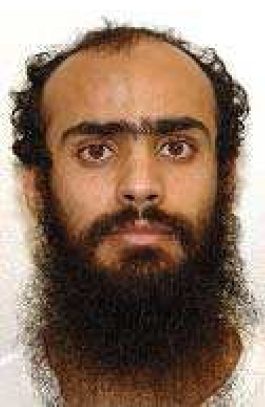
Ali Ahmad Muhammad Al Rahizi is a citizen of Yemen who was held in extrajudicial detention in the United States Guantanamo Bay detainment camps, in Cuba. His Guantanamo Internment Serial Number is 45. Joint Task Force Guantanamo counter-terrorism analysts reports he was born on October 13, 1979, in Taiz, Yemen.

Ridah Bin Saleh Bin Mabrouk Al Yazidi is a citizen of Tunisia who was held in extrajudicial detention in the United States Guantanamo Bay detainment camps, in Cuba since the day it opened, on January 11, 2002.

Idris Ahmed ʽAbd al Qader Idris is a citizen of Yemen, who was held in the United States Guantanamo Bay detainment camps, in Cuba. His detainee ID number was 035. American intelligence analysts estimate he was born in 1979, in Rada, Yemen. Idris was transferred to Oman on June 13, 2015, where the Government of Oman agreed to what the Department of Defense called "appropriate security measures". He arrived on June 8, 2002, he was held in extrajudicial detention, and never faced criminal charges. The Department of Defense never fully released its justification for holding Idris, but on April 25, 2011, the Guantanamo Bay files leak was published.
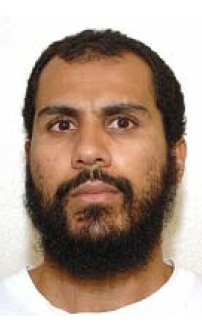
Zahar Omar Hamis Bin Hamdoun is a citizen of Yemen, held in extrajudicial detention in the United States Guantanamo Bay detainment camps, in Cuba. His Guantanamo Internment Serial Number is 576. The Department of Defense reports that he was born on November 13, 1979, in Ash-Shihr, Yemen.

Ali Hamza Ahmad Suliman al-Bahlul is a Yemeni citizen who has been held as an enemy combatant since 2002 in the United States Guantanamo Bay detention camp. He boycotted the Guantanamo Military Commissions, arguing that there was no legal basis for the military tribunals to judge him.
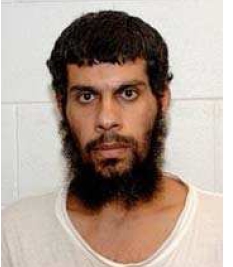
Mohammed Rajab Sadiq Abu Ghanim was held in extrajudicial detention in the United States Guantanamo Bay detention camps, in Cuba, for almost fifteen years. His Guantanamo Internee Security Number is 44. He was eventually transferred to Saudi Arabia
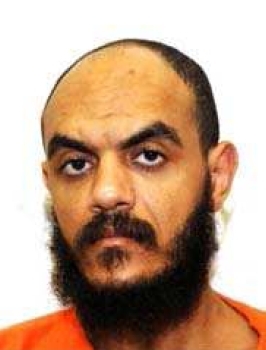
Abdul Rahman Shalabi is a citizen of Saudi Arabia held in extrajudicial detention in the United States Guantanamo Bay detention camps, in Cuba. His Guantanamo Internee Security Number is 42.
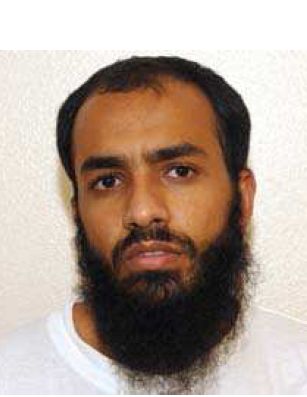
Muhammaed Yasir Ahmed Taher was a citizen of Yemen, who was held in extrajudicial detention in the United States's Guantanamo Bay detention camps, in Cuba. His Guantanamo Internment Serial Number was 679. American intelligence analysts estimate he was born in 1980, in Ibb, Yemen.
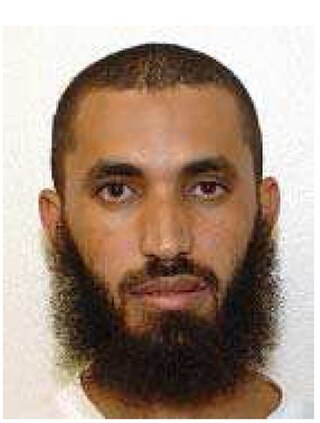
Abdel Malik Ahmed Abdel Wahab Al Rahabi is a citizen of Yemen who was held in extrajudicial detention by the United States from December 2001 to June 22, 2016. He was one of the first twenty captives transferred to the Guantanamo Bay detention camps, in Cuba, on January 11, 2002, and was held there until he was transferred to Montenegro, which granted him political asylum.


















